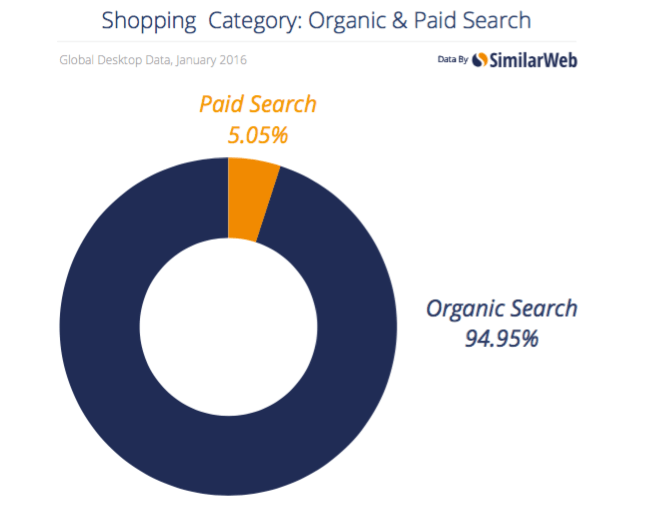Every small business today, whether it’s a local shop with an online store or a consultancy offering digital services, faces the same reality: cyber threats are no longer reserved for large corporations. Hackers, data miners, and malicious bots often target small businesses because they assume security systems are weaker and easier to breach. That’s why improving online security has become a top priority for entrepreneurs who want to protect both their company’s data and their customers’ trust. Among the many tools available, proxies stand out as a powerful and often overlooked component.
Understanding What Proxies Actually Do
At their core, proxies act as a middle layer between your device and the internet. Instead of connecting directly to a website, your request passes through a proxy server, which then forwards it to the destination. The site only “sees” the proxy’s IP address rather than your own.
For small businesses, this creates a shield that adds an essential layer of privacy and control. Think of it like a receptionist who filters calls and visitors before they reach your office—you’re harder to reach directly, and that makes you safer.
There are two common roles to know.
- Forward proxy (outbound): Sits between your staff and the public internet. It can mask employee IPs, enforce browsing rules, and log traffic for compliance and auditing.
- Reverse proxy (inbound): Sits in front of your website or web app. It can terminate HTTPS (TLS), cache content, hide your origin server’s IP, and—when paired with security rules—help filter bad requests.
Used correctly, these roles help small businesses improve privacy, reduce exposure, and standardize how traffic flows in and out of the organization.
Key Security Benefits For Small Businesses
When implemented correctly, proxies can reduce common risks for small businesses. Here’s how (mapped to the right role):
- IP masking: A forward proxy can mask employee IPs on outbound browsing; a reverse proxy can keep your origin server’s IP off the public internet.
- Reduced attack surface (for public web apps): A reverse proxy sits in front of your site/app, making it harder to reach the origin directly. With simple rules (rate limits, allowlists), you can shrink exposure further.
- HTTPS/TLS in transit: A reverse proxy can terminate HTTPS (TLS) to ensure traffic is encrypted in transit. Configure end-to-end TLS (proxy ↔ origin) or keep the internal link on a secure network segment.
- Bot mitigation (with rules): Proxies alone don’t stop bots. Pair a reverse proxy with a WAF/CDN or rule set to filter common automated abuse (credential stuffing, basic scraping, request floods).
- Safer remote work (with authentication): Route remote or contractor traffic through an authenticated forward proxy (or VPN) so you can apply policy, logging, and least-privilege access. Avoid exposing admin panels directly to the internet.
Used together, these controls create layered protection: less direct exposure, encrypted traffic, better visibility, and policy enforcement at the edge.
Real-World Use Cases Where Proxies Make A Difference
Security isn’t the only reason to consider proxies. They also enable practical advantages in daily operations.
A digital marketing agency can test ads and landing pages from different regions without revealing its office IP. An e-commerce store can reduce basic scraping and throttle suspicious traffic. Accounting or law firms can route web access through a controlled path for extra privacy and auditability when handling sensitive client information.
Here’s a simple table showing where proxies help small enterprises. We’ve aligned each advantage to the right setup so expectations stay realistic.
| Business Type | Risk → Recommended Setup |
| E-commerce stores | Risk: Price scraping, fake traffic. Setup: Reverse proxy in front of site to hide origin IP, add rate limits, and apply basic WAF rules. |
| Marketing agencies | Risk: Regional testing, IP-based throttles. Setup: Forward proxy for safe multi-location QA and ad previewing without exposing office IP. |
| Service providers | Risk: Data interception on public Wi-Fi. Setup: Reverse proxy + HTTPS (TLS) for public web apps; forward proxy or VPN for staff web access. |
| Remote teams | Risk: Unsecured connections, shadow IT. Setup: Authenticated forward proxy (or VPN) to apply policy, logging, and least-privilege access. |
A few quick examples in practice include the following.
- Campaign QA without surprises: Teams preview geo-targeted pages through a forward proxy to confirm what real users in those regions will see.
- Basic anti-abuse at the edge: A reverse proxy can rate-limit bursts, challenge obvious bots, and keep your origin out of direct fire. For serious bot problems, pair it with a WAF/CDN rule set.
- Client confidentiality: Professional services route browsing through an authenticated forward proxy, so sensitive lookups pass through a monitored, policy-enforced gateway instead of random networks.
- Smoother peaks on launch days: Reverse proxy caching takes pressure off the origin during traffic spikes, reducing 5xx errors and keeping pages responsive.
Used this way, proxies add control and predictability: you decide how traffic reaches your systems and how your systems reach the web, without redesigning your entire stack.
Why Small Businesses Can’t Afford To Ignore This Technology
Some owners assume proxies are “enterprise-only.” In reality, small businesses face many of the same threats (phishing kits, basic credential stuffing, scraping, and traffic spikes), just with fewer people to respond. A single incident can drain time, money, and customer trust.
Proxies won’t solve everything, but they’re a practical way to make your setup harder to attack and easier to manage. Think of a reverse proxy as a guard at the door of your website or web app. It hides the exact location of your origin server, enforces simple rules (like rate limits), and handles HTTPS so traffic stays encrypted in transit.
Meanwhile, a forward proxy gives you a clean, controlled path for staff web access. You can apply policy in one place, require authentication for remote users, and keep short-retention logs for audits. Because both roles sit at the “edge,” you can improve security without rewriting your application or buying an entirely new stack.
That edge control also scales with you: as traffic grows, you can add caching, tweak rules, and plug in a WAF/CDN for stronger bot mitigation—step by step, without disrupting the business.
Bottom line: proxies give small teams leverage. They help you shrink exposure, standardize connections, and respond faster when something looks off, all while keeping the day-to-day experience smooth for customers and staff.
How To Choose The Right Proxy Solution
Choosing a reliable provider is an important step, as proxy services can differ greatly in quality. Start by clarifying your primary need: reverse proxy in front of a public website/app, or forward proxy to control outbound staff web access (or both). From there, evaluate the following.
Stability & Performance
Look for a documented uptime SLA and a public status page with historical incidents. Assess latency from your main regions (number and placement of PoPs), connection limits, and how the platform handles bursts during launches or campaigns. For reverse proxies, ask about caching efficiency and features like pre-warming and grace/stale modes to keep pages responsive if your origin slows down.
Security Features
For reverse proxies: confirm TLS (HTTPS) termination, automatic certificate management, HSTS, and support for HTTP/2 or HTTP/3. For forward proxies: require authenticated access (IP allowlists, user/pass, SSO/MFA) and policy controls.
On both sides, look for rate limiting, IP reputation signals, and simple integration with a WAF/CDN for bot mitigation and DDoS absorption. Bonus points for origin allowlisting so only the proxy can reach your server.
Logging & Privacy
You should be able to tune what’s logged (requests, auth events), redact sensitive fields (e.g., Authorization headers, PII), and set short retention by default. Export to your SIEM or storage (syslog/S3) and verify where logs are stored geographically. Make sure the provider’s data handling aligns with your compliance needs and that you can delete or anonymize logs on request.
Protocol & Feature Support
Confirm support for HTTP/1.1, HTTP/2, and HTTP/3/QUIC as appropriate to your stack. If you use WebSockets or gRPC, verify those paths work end-to-end. For forward proxies, check SOCKS5 availability and DNS handling. For reverse proxies, review cache controls, stale-while-revalidate, compression, and automatic certificate renewal (ACME). IPv4/IPv6 dual-stack support is increasingly important.
Operational Fit
Decide whether you want self-serve controls or a managed setup. A clear dashboard, API/Terraform support, change history, and safe rollbacks/canary options make operations calmer. Evaluate documentation quality, onboarding resources, and support SLAs (response times, escalation paths). Incident communication should be timely and transparent.
Transparency & Value
Prefer pricing that’s easy to model (avoid surprise egress or add-on fees). Trials or short pilots let you test in your real environment before committing. Check the minimum terms, cancellation, and how easily you can export configs or migrate if needed.
Free or poorly managed proxies may introduce risk (instability, weak controls, or questionable logging practices). Most small teams are better served by reputable, well-documented providers where they can configure policy, logging, and TLS properly.
If you’re exploring professional options, services like Proxys.io may offer a way to manage online activity with greater security and flexibility. Though you should choose any reputable vendor that meets your requirements.
Final Thoughts On Building Digital Resilience
In a world where online threats evolve daily, small businesses do best with layered, practical defenses. Proxies fit that mold. A reverse proxy helps protect public-facing sites and apps by hiding your origin, enforcing rules at the edge, and handling HTTPS. A forward proxy gives you a consistent, policy-driven path for staff and contractors, so access stays controlled even when people work remotely.
None of this replaces the basics—MFA, patching, backups, least-privilege, and a password manager—but proxies make those basics work better by adding structure and visibility to your traffic. Start small: put a reverse proxy in front of anything public, route remote access through an authenticated forward proxy (or VPN), and turn on logging with short retention. Then iterate: rate-limit noisy paths, enable HTTP/2 or HTTP/3, and plug in WAF/CDN rules if automation or scraping becomes an issue.
Used this way, proxies aren’t a luxury; they’re a manageable way to reduce risk and keep your site and workflows fast, stable, and predictable as you grow.
FAQ
A VPN creates an encrypted tunnel for all traffic from a device or network and masks the user’s IP. A proxy relays specific traffic (e.g., web via HTTP or apps via SOCKS) and can be forward (controls outbound staff browsing) or reverse (sits in front of your website/app). For most small businesses: use a VPN for secure remote access, a forward proxy for policy/logging, and a reverse proxy to protect public apps.
It sits in front of your website/app and receives requests first. It can terminate TLS (HTTPS), apply rules (rate limits, IP allow/deny), cache content, and forward clean traffic to your origin—keeping the origin’s IP hidden and reducing direct exposure. You can also add WAF/CDN integration for stronger bot/DDoS mitigation.
SOCKS5 is a transport-level proxy that relays traffic for many protocols, not just HTTP. It doesn’t encrypt by default and doesn’t “understand” web content; it simply passes packets through (with optional authentication). It’s useful for tools that aren’t purely browser-based or when you need flexible app support.
These use IPs assigned to consumer ISPs, so traffic appears to come from a home connection. They’re common in ad verification, QA, and geo-testing. Downsides: higher cost, slower performance, and possible compliance concerns. Most small businesses don’t need them unless a specific workflow requires consumer-grade geolocation.
Pick a managed service or open-source option (e.g., NGINX, HAProxy, Traefik). Put it in front of your app, obtain TLS certificates (e.g., via ACME/Let’s Encrypt), configure upstream/backends, and enable HTTP/2 or HTTP/3. Add HSTS, sensible rate limits, and origin allowlisting; then log, monitor, and, if needed, integrate a WAF/CDN. Test in staging before going live.

This content is from a contributor and may not represent the views of Tech Help Canada. All articles are reviewed by our editorial team for clarity and accuracy.
Want a heads-up once a week whenever a new article drops?







